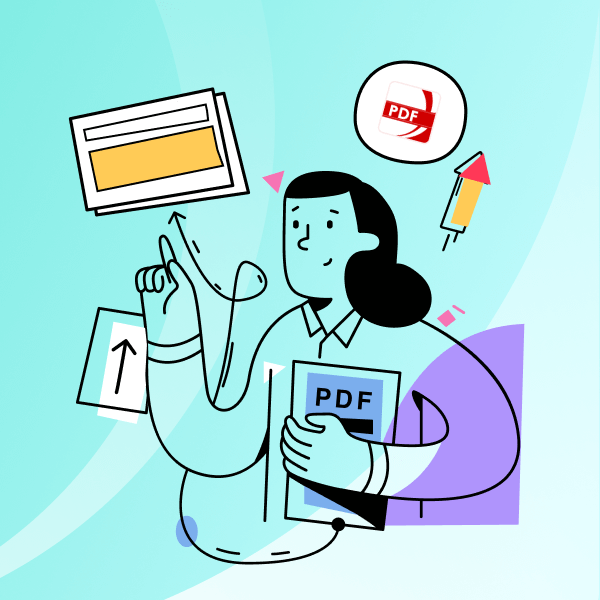An addendum updates or corrects a document after publication, while an appendix provides extra supporting information.
This guide explains their roles and how to use them to enhance document clarity and depth.
What is an Addendum?
An addendum is a critical tool in document management, particularly in legal and contractual scenarios. It serves a specific purpose and holds significant legal implications.
Key Points of an Addendum
- Nature: A formal, legal document attached to an original document, like a contract or agreement.
- Purpose: To modify, update, or add new details to the original document.
- Usage Examples: In real estate, adding conditions to a sale contract; in business, updating terms in a legal contract.
- Legal Standing: Once signed by all parties, it becomes as legally binding as the original document.
- Importance: Ensures clarity and mutual understanding of any changes or updates post the original agreement.
Check out our "Addendum to Contract" template below for a real-world example!
Addendum: A legal tool for modifying an original document.
Learn how to write an addendum with our step-by-step guide, ensuring clear and effective amendments to your documents.
What is an Appendix?
While often confused with an addendum, an appendix plays a distinct role in enhancing a document's comprehension.
It is an invaluable component for providing additional context and details.
Key Points of an Appendix
- Nature: A supplementary section of a document providing additional information.
- Purpose: To elaborate, clarify, or provide supporting data to the main content.
- Usage Examples: In a report, including charts or research data; in contracts, adding specifications or definitions.
- Legal Standing: Informational in nature, doesn't modify the original document's terms.
- Function: Enhances understanding of the main document by providing detailed background or context.
Appendix: An informational tool for supplementing a document.

Addendum vs. Appendix: Comparison Table
Feature |
Addendum |
Appendix |
Purpose |
To provide updates, corrections, or clarifications to the original document after publication. | To supplement the main text with additional supporting information. |
Content |
May include revised data, additional details not previously included, or corrections of errors. | Consists of tables, figures, questionnaires, detailed explanations, and other relevant data that supports the document's content. |
Placement |
Typically found at the end of a document but can also be inserted at the specific point of relevance. | Usually located at the end of the document, after the main content and before any references or bibliography. |
Frequency |
Used as needed, often in response to errors, updates, or newly available information. | It can be used liberally throughout a document to provide comprehensive support to the text without overcrowding the main content. |
Impact on Original Document |
Directly alters or adds to the existing content, emphasizing the dynamic nature of the document. | Enhances and elaborates on the content without altering the original text, serving as a static support resource. |
While both addenda and appendices serve to enrich and clarify documents, addenda modifies the original content post-publication, whereas appendices provide in-depth supplementary information without altering the core text.
As a content writer, I updated a published digital marketing guide by adding an addendum with PDF Reader Pro to include recent social media algorithm changes.

An appendix was also added for detailed user engagement statistics and graphs, enriching the main text without overwhelming it.
This method effectively kept the guide current and enhanced its comprehensiveness, showcasing PDF Reader Pro's capability for editing, creating, and organizing PDF documents.
Understand the vital legal differences between an addendum and an amendment with our comprehensive analysis.
Addendum vs Appendix: Formatting Guidelines
Formatting guidelines are essential to maintain clarity and consistency when adding an addendum or appendix to a document. Here are key formatting tips for both:
Addendum Formatting Guidelines
- Title: Clearly label the section as "Addendum," followed by a title that reflects its content, if applicable. Use bold or larger font sizes for emphasis.
- Date: Include the date of the addendum to document when the additional information was added.
- Reference: Reference the original document or section it modifies or enhances.
- Structure: Maintain a consistent structure with the main document, using similar headings, font styles, and sizes.
- Clarity: Write in clear, concise language to ensure the addendum’s purpose is easily understood.
- Placement: Typically placed at the end of the document unless it directly amends a specific section.

Appendix Formatting Guidelines
- Title: Begin with "Appendix" followed by a letter (A, B, C, etc.) or number if multiple appendices exist. Provide a descriptive title for each.
- Order: Place appendices in the order they are mentioned in the text.
- Headings: Use consistent headings and subheadings to organize the content within each appendix.
- Page Numbering: Continue the document’s page numbering into the appendices or start a new numbering sequence using Appendix letters/numbers.
- References: If the appendix refers to external sources, include these references within the appendix or in the main document's reference section, depending on your style guide.
- Format: Match the formatting style (margins, fonts, spacing) of the main document to keep it professional and cohesive.

Discover how to efficiently navigate PDF Books World with our guide, enhancing your digital reading experience.
General Tips for Both
- Consistency: Ensure that the formatting is consistent with the main document to provide a seamless reading experience.
- Accessibility: Use clear, descriptive titles and headings to make the addendum and appendix easily navigable.
- Professionalism: Proofread for spelling, grammar, and formatting errors to maintain professionalism.

Addendum vs Appendix: FAQ
Are addenda and appendices necessary for all documents?
Not all documents require addenda or appendices. They are used when information needs to be updated (addendum) or in-depth details provided (appendix) that complement the document's main content without overcrowding it.
How detailed should an appendix be?
An appendix can be as detailed as necessary to support the main document. It may include data tables, figures, questionnaires, extended quotations, or technical descriptions. The key is to ensure that the information is organized and presented clearly for the reader.
Can an addendum or appendix include visual elements?
Yes, both can include visual elements. An addendum might contain updated charts or graphs reflecting new data, while an appendix is often used to house detailed charts, tables, images, or diagrams that are too bulky or detailed for the main body of the document.
Can digital documents have interactive addenda and appendices?
Yes, digital formats allow for interactive elements in addenda and appendices, such as clickable links to data sources or multimedia content.
How do readers typically use addenda and appendices?
Readers refer to addenda for updates and to appendices for additional context or to explore topics in greater depth, enhancing their overall comprehension of the document.











 Free Download
Free Download  Free Download
Free Download 





 Support Chat
Support Chat